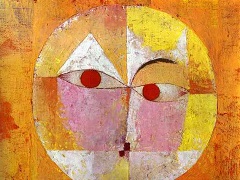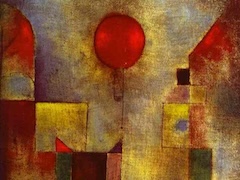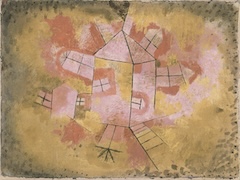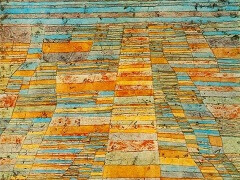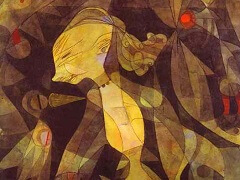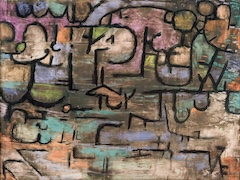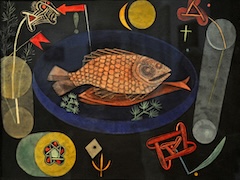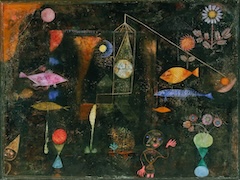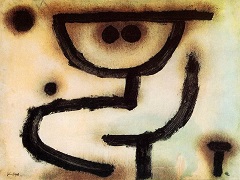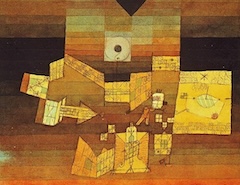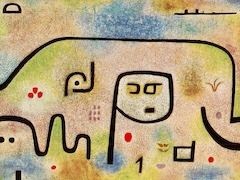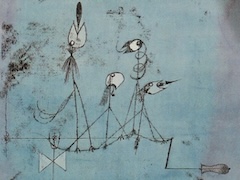Crystal Gradation, 1921 by Paul Klee
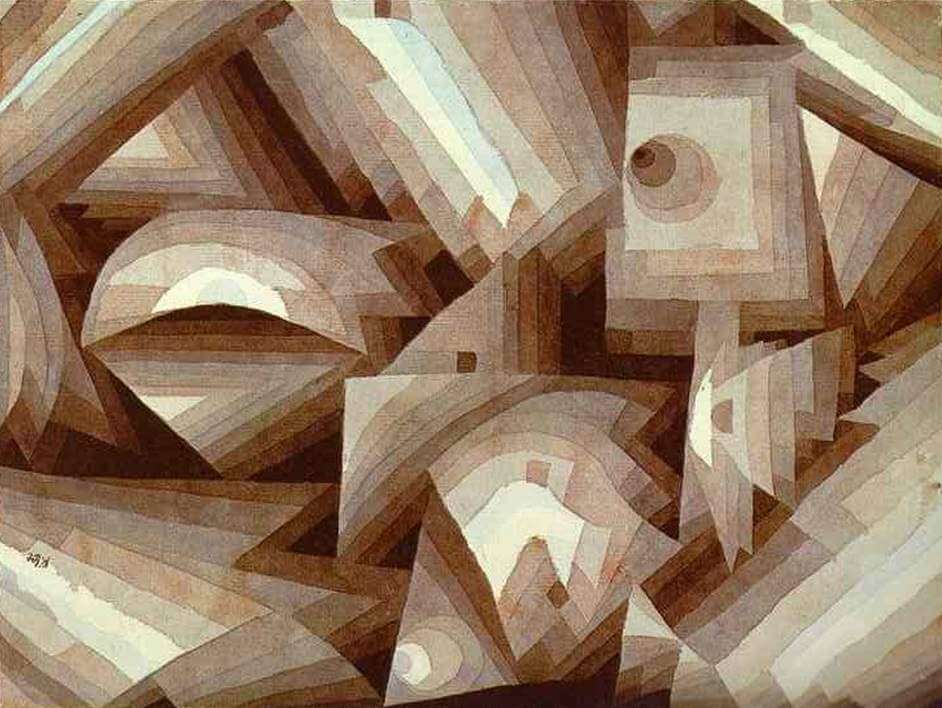
Reflections on Klee's creative activity during Bauhaus period must first take into consideration mutual dependence, and the close relationship in his theoretical ideas and his artistic activity, the watercolours Crystal Gradations, painted in 1921 and 1923, were clearly the result of his methodical experiment with the theory of colour, Nevertheless, Klee's fundamental principle that the artist does not try 'to put the naked law into the actual but that the laws should only be underneath so that flowers may grow from them' is manifestly led by this work.
In the handling of mixed colours the painter works with layers and calculates every step according to its peculiar mixture: the tone values are mixed to exact proportions in pots.
The colour movement is measured by glazing, in which the gradations are added with layers of transparent watercolours on a field divided into stripes. Sometimes a stripe is reserved. Every layer of colour has to dry before the next one can be applied. This method is the base of Klee's black watercolours of 1908.
Between 1921 and 1923 a series of watercolours, demonstrating the glazing method, appear in which the artist, to use his own words 'tried out the partial colour actions we have been discussing one after another. Klee kept exact records in his catalogue of works of the colour he used as a starting-point for the gradations.
Crystal Gradation is an example of a first group of works in 'Chiaroscuro painting weighted with colour.' By mutual shifting, by box-structures and overlapping, diminutive forms, increasing and diminishing, are arranged in a dynamic play of relations to which the light/dark gradation gives the appearance of spatial movement between background and foreground. The forms stand out illuminated in stages on a dark ground, so that the grey tones, moving from the black to the white polarity are weighted with colour. The light red and turquoise green colour-effect of Crystal Gradation reminds one of smoky quartz.

